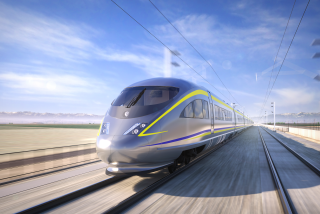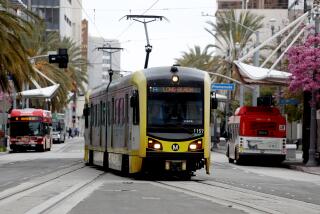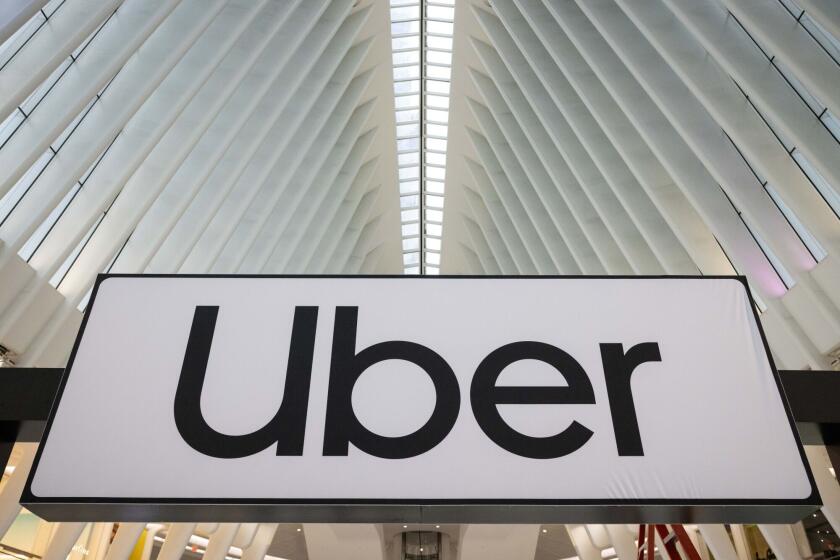Funds Pledged to Help Get Rail Project Rolling : Transportation: Glendale officials hope their financing plan will persuade a county panel to give higher priority to two proposed lines that would go through the city.
- Share via
Intent on getting a modern, mass-transit system in Glendale, city officials have pledged to help pay for it locally, including funds from business, in hopes of swaying the Los Angeles County Transportation Commission to put Glendale in its plans.
The commission has the authority to dole out $140 billion in local, state and federal transit money over the next 30 to 40 years. Its decisions, to be made within a few months, will determine what areas of the county will benefit from transit improvements.
So far, the commission has given little priority to transit needs in Glendale.
City officials said they are determined to change that.
They have been meeting with commission members for the last few weeks and more individual sessions are scheduled, City Manager Dave Ramsay said.
Last week, Glendale Mayor Ginger Bremberg, backed by a contingent of city officials, appeared before the commission to pledge that the city is willing “to put our money where our mouth is.”
She said the city already has spent $11.2 million in transit improvements geared to the regional system, such as purchase of the historic Southern Pacific train station for renovation and expansion as the city’s Transportation Center and develop the free Beeline downtown shuttle service.
Bremberg said the city is prepared to allocate future revenues from the Proposition A and Proposition C transit taxes, the formation of a proposed new redevelopment zone in the Grand Central industrial area and other avenues to raise money toward building a light-rail system.
Bremberg said private businesses have pledged their help. For instance, she said, Walt Disney’s Imagineering, the city’s largest employer with 3,000 workers at offices in the industrial area, is among supporters.
Imagineering is responsible for the design and development of theme parks throughout the world. Alan Epstein, vice president of Disney Development Co., said, “We are very interested in mass transit, and we are working closely with the city.”
Bremberg said local officials are hoping that if they raise enough money, they can pique the interest of the commission and gain greater priority for development of light rail in Glendale.
“Consider me a dutiful bride with a dowry,” Bremberg told commissioners at a hearing June 26. Commission Chairman Ray Grabinski said Glendale’s pledge “could show the other 86 cities in the county what opportunities exist” for innovative transit development.
Glendale’s pledge of private funding for transit development is nothing new--almost all railroads in the United States were built privately--but the idea, at least, is considered innovative in current times, said Martin Markovich, associate transportation planner for the Southern California Assn. of Governments.
“It wouldn’t be an entirely new concept, but it has not been applied extensively in the last 20 years or so,” Markovich said. “We are all looking with a lot of interest on this possibility.”
Glendale is lobbying for a light-rail transit line paralleling the Southern Pacific railroad tracks along San Fernando Road. The existing tracks already are scheduled to be used within about two years for commuter rail service between the Santa Clarita Valley and Simi Valley to Glendale and downtown Los Angeles.
A second set of tracks would be built for light-rail transit, extending the Long Beach to Los Angeles Blue Line through Glendale. It would stop at the Transportation Center at 400 W. Cerritos Ave., at a second proposed station in the Grand Central industrial area, and continue to Burbank Airport.
The Transportation Commission already has purchased a portion of Southern Pacific’s Taylor Yard freight train facility, just outside Elysian Park and two miles south of Glendale’s border, to be used as a regional equipment maintenance yard for the light rail system.
Commission officials estimate that the cost of extending the light-rail line from Taylor Yard 5 1/2 miles north through Glendale is about $200 million.
However, no funds are set aside for development of the Glendale line in the commission’s draft report of its so-called “30-Year Plan,” released in May.
In contrast, the draft report recommends greater priority be given to extending the Blue Line 14.7 miles to Pasadena through Eagle Rock--estimated to cost $688 million.
A proposed east-west line through the San Fernando Valley--estimated to cost $3 billion for 14 miles, according to the commission--also has greater priority. Meantime, the Valley line has been riddled with controversy as residents have voiced their opposition to proposed routes.
Glendale, which has been given low priority since the commission first announced proposed routes in 1983, in the last few years has worked hard to improve its status.
City officials have formed a coalition with Burbank and Pasadena with the hopes of flexing the powerful political muscles of a populace of 500,000.
“It’s important that we become politically active in order to influence the commission,” said Councilman Carl Raggio, who helped form the Tri-City Transportation Coalition two years ago. “They can be influenced by the size of our three cities and tend to listen more.”
“We’re somewhere way out in the 30-year plan and that’s very frustrating,” Ramsay said. “We think Glendale is a key in the transportation system in Los Angeles. We’re the third-largest city in the county. We thought that if we offered to put up some money, they would listen to us.”
Bijan Yarjani, principal planner for the Southern California Assn. of Governments, said Glendale’s financial pledge may be a key to funding in the future.
“All you have to do is look at the state budget and the lack of funding,” Yarjani said. “We have to look at the possibilities of joint development strategies.
“If we are going to grow as much as we say we will, we will need more money than what is available to us for the next 25 years, just to keep the level of mobility the same as it is today.”
More to Read
Sign up for Essential California
The most important California stories and recommendations in your inbox every morning.
You may occasionally receive promotional content from the Los Angeles Times.













